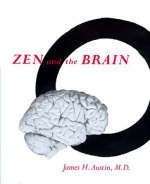
Zen and the Brain
Toward an Understanding of Meditation and Consciousness
Seiten
1998
MIT Press (Verlag)
978-0-262-01164-8 (ISBN)
MIT Press (Verlag)
978-0-262-01164-8 (ISBN)
- Titel ist leider vergriffen;
keine Neuauflage - Artikel merken
In this work Zen Buddhism becomes the opening wedge for an exploration of consciousness. The author aims to show that in order to understand which brain mechanisms produce Zen states, one needs some understanding of the anatomy, physiology, and chemistry of the brain.
Aldous Huxley called humankind's basic trend toward spiritual growth the "perennial philosophy". In the view of James Austin, the trend implies a "perennial psychophysiology" - because awakening, or enlightenment, occurs only when the human brain undergoes substantial changes. What are the peak experiences of enlightenment? How could these states profoundly enhance, and yet simplify, the workings of the brain? Zen and the Brain presents the evidence. In this book Zen Buddhism becomes the opening wedge for an exploration of consciousness. In order to understand which brain mechanisms produce Zen states, one needs some understanding of the anatomy, physiology, and chemistry of the brain. Austin, both a neurologist and a Zen practitioner, interweaves brain research with the personal narrative of his Zen experiences. Along the way, Austin examines such topics as similar states in other disciplines and religions, sleep and dreams, mental illness, consciousness-altering drugs, and the social consequences of the advanced stage of ongoing enlightenment.
Aldous Huxley called humankind's basic trend toward spiritual growth the "perennial philosophy". In the view of James Austin, the trend implies a "perennial psychophysiology" - because awakening, or enlightenment, occurs only when the human brain undergoes substantial changes. What are the peak experiences of enlightenment? How could these states profoundly enhance, and yet simplify, the workings of the brain? Zen and the Brain presents the evidence. In this book Zen Buddhism becomes the opening wedge for an exploration of consciousness. In order to understand which brain mechanisms produce Zen states, one needs some understanding of the anatomy, physiology, and chemistry of the brain. Austin, both a neurologist and a Zen practitioner, interweaves brain research with the personal narrative of his Zen experiences. Along the way, Austin examines such topics as similar states in other disciplines and religions, sleep and dreams, mental illness, consciousness-altering drugs, and the social consequences of the advanced stage of ongoing enlightenment.
Starting to point toward Zen; meditating; neurologizing; exploring states of consciousness; quickening; turning in - the absorptions; turning out - the awakenings; being and beyond - to the stage of ongoing enlightenment. Appendices: introduction to "The Heart Sutra"; selections from "Affirmation of Faith and Mind".
| Erscheint lt. Verlag | 31.3.1998 |
|---|---|
| Zusatzinfo | 18 |
| Verlagsort | Cambridge, Mass. |
| Sprache | englisch |
| Maße | 185 x 260 mm |
| Gewicht | 454 g |
| Themenwelt | Sachbuch/Ratgeber ► Gesundheit / Leben / Psychologie ► Esoterik / Spiritualität |
| Geisteswissenschaften ► Psychologie ► Allgemeine Psychologie | |
| Geisteswissenschaften ► Psychologie ► Biopsychologie / Neurowissenschaften | |
| Geisteswissenschaften ► Psychologie ► Verhaltenstherapie | |
| Geisteswissenschaften ► Religion / Theologie ► Buddhismus | |
| Naturwissenschaften ► Biologie ► Humanbiologie | |
| Naturwissenschaften ► Biologie ► Zoologie | |
| ISBN-10 | 0-262-01164-6 / 0262011646 |
| ISBN-13 | 978-0-262-01164-8 / 9780262011648 |
| Zustand | Neuware |
| Haben Sie eine Frage zum Produkt? |
Mehr entdecken
aus dem Bereich
aus dem Bereich
Neue medizinische Fakten zur Nahtoderfahrung
Buch | Softcover (2023)
Patmos Verlag
22,00 €
mit einem Geleitwort von Elke Heidenreich
Buch | Hardcover (2024)
Kösel (Verlag)
30,00 €


